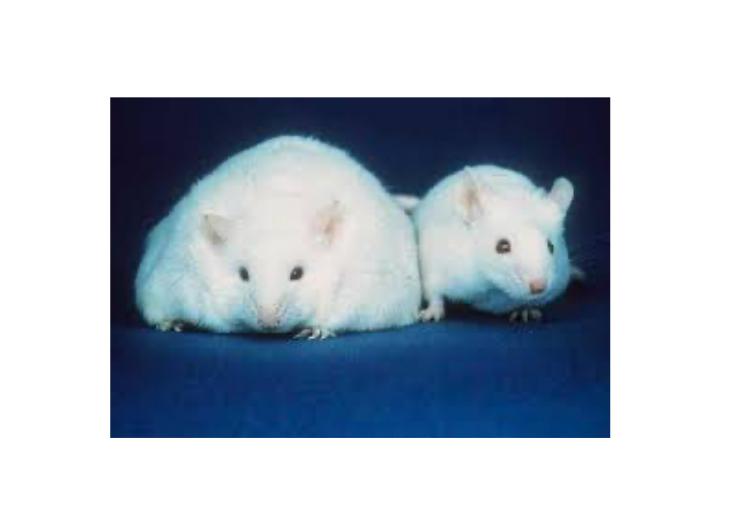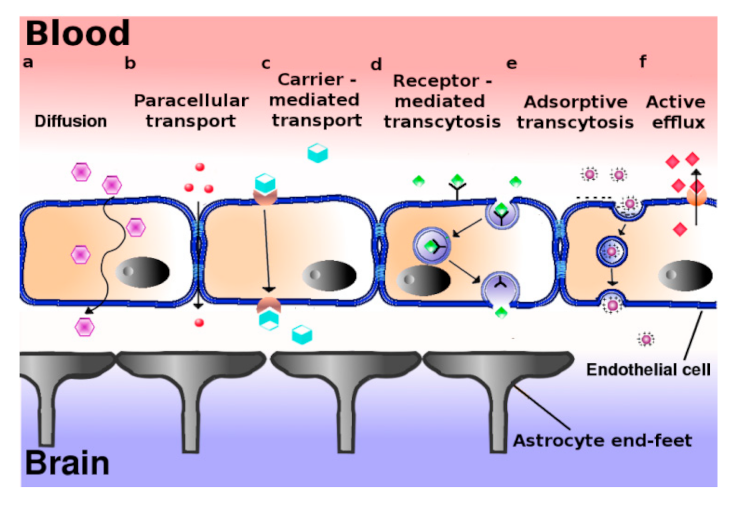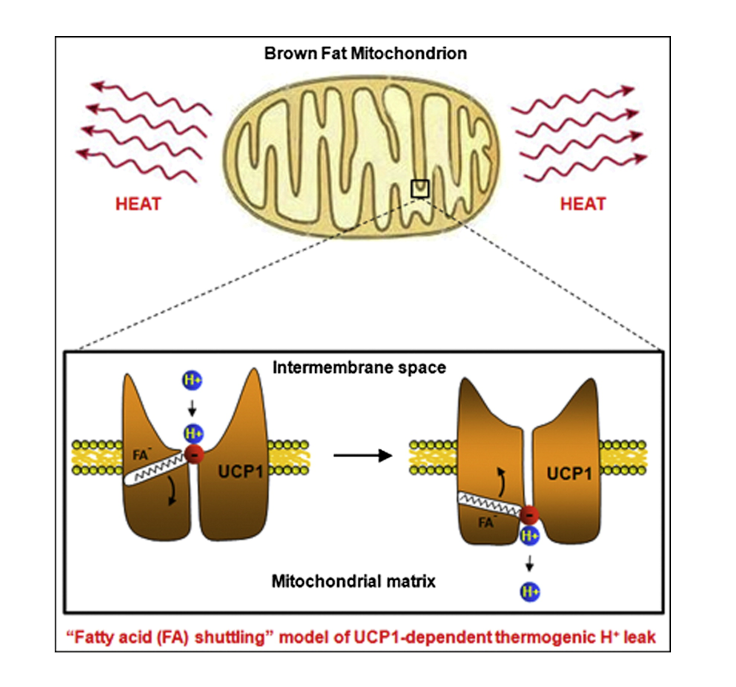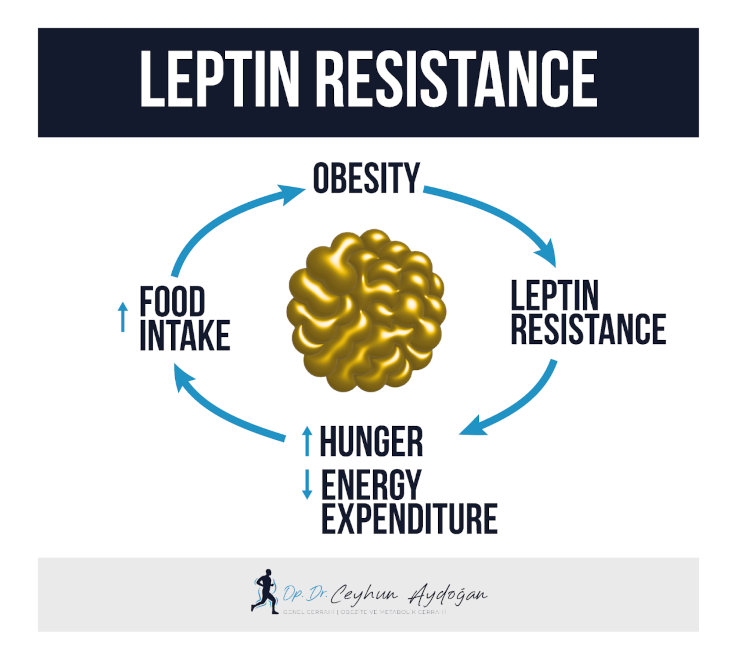C O A C H I N G
Leptin if obesity - What is leptin
What is leptin
Leptin is one of the most interesting and intricate hormones within the human body. Leptin is referred to as an adipokine because it's released by adipocytes (fat cells). The concentration of leptin that is released into the bloodstream is dependent upon our body mass and nutritional status. The more body mass, specifically fat mass, an individual carries, the more leptin they will produce. With that being said, states of course restriction and fasting decrease circulating levels of leptin. As you will see in a moment, working regulates appetite and energy expenditure. The more leptin we have, typically the higher our resting energy expenditure and the lower our appetite. Plus, it is evolutionarily consistent that leptin would be inhibited in a state of low body mass and starvation, in order to conserve as much energy as possible and promote feeding behaviors.
Leptin is released in large part by the fat cells . The production of leptin is regulated by a series of different hormones that can either increase or decrease the release of leptin. There's a specific portion of our DNA that is dedicated to the transcription and production of leptin. Interestingly, when this Gene is knocked out of a mouse, these animals become abnormally overweight. The mechanism behind this is not necessarily due to an abnormal storage of fat despite eating and moving the same as the other mice. It is very clear the mechanism behind their pronounced obesity occurs because these animals become hypoactive (inactive) and hypophagic (excessively hungry), which is one of the most clear indications of leptins regulating body weight through our appetite and total energy expenditure.

The production of leptin is regulated in large part by insulin. I really enjoy looking at the etiology of different physiological functions. Etiology is simply understanding the evolutionary context by which our physiological functions may have been advantageous. For example, insulin is secreted in proportion to the amount of food we eat at a single meal. Thus, it is likely highly advantageous that the production of leptin can be regulated by a hormone that is typically only elevated in proportion to the amount of food we are ingesting. Moreover, whether by design or simply natural selection, it makes sense that adipose tissue is the specific tissue type that secretes leptin, therefore leptin is secreted in proportion to our fat storage. Low body mass would decrease leptin, thus decreasing energy expenditure and increasing energy conservation. High body mass leads to greater leptin release, which SHOULD increase energy expenditure and decrease energy conservation.
In addition, glucocorticoids, specifically cortisol, also increase leptin synthesis and release. This is likely due to the fact that they increase blood glucose and glucose uptake, which seems to be the mechanism by which insulin stimulation from food intake also increases leptin production. Once again looking at the etiology of this physiological function, glucocorticoids are typically released in response to a physiological stress. Thus, it would be an adequate time to increase energy expenditure and fuel utilization, and decrease appetite sensations.
Conversely, hormones that are released in response to fasting and caloric restriction, such as glucagon and other catabolic molecules like adrenaline, reduce the amount of leptin we release into circulation. This makes etiological sense because these molecules are increased in states of food scarcity, in which energy conservation is an adaptive and beneficial response.
Certain fuels sources within the bloodstream can also regulate the secretion of leptin. High levels of circulating fatty acids, which typically occur during caloric restriction and fasting, down regulates the release of leptin. Glucose and amino acids can increase production of leptin. This is an interesting caveat for individuals on a very high fat, low carbohydrate and low protein diet, as it does portray vast similarities to the fasted state. This may adversely impact leptin signaling due to high circulating fatty acids, however it does appear that ketones have an appetite suppressive effect. With that being said, there are many other hormones that can regulate appetite and energy expenditure that may help mitigate some of the negative ramifications of an extremely ketogenic diet (1).
As you may be able to tell, the regulation of leptin is in large part regulated by our nutritional status and body mass. Environmental inputs work to conserve body mass, decrease energy usage, and increase appetite in states of perceived nutritional inadequacy. In states of perceived abundance, leptin helps to liberate body mass and decrease food seeking. .This is why leptin is often referred to as the lipostat, or the body fat thermostat. When leptin signaling is functioning adequately, it allows us to regulate our appetite and energy expenditure in order to maintain our body weight around a homeostatic set point. That being said, as I will discuss later, in scenarios of excessive body weight accumulation, this normal homeostatic regulation can become disrupted. That said, let us understand what leptin actually does, and how it regulates body weight and energy expenditure.
Natural state of low energy and low metabolism
To frame this discussion, it's important I understand that the body has a natural tendency to conserve energy. In essence, leptin works to counterbalance the body's natural tendency to down regulate metabolism and motivate feeding behavior.
Leptin receptor signaling
As you begin to learn more about human physiology, you begin to realize that a large majority of how physiological functions are regulated by Gene expression. In essence, the DNA has the instructions for virtually every physiological function within the body. Hormones in Los Angeles work to increase or decrease the expression of certain portions of our DNA, which is how they exert their physiological function.
In a case of leptin, leptin binds to the leptin receptor, which is located all throughout the body as we will discuss in a moment. And through a series of intracellular proteins, leptin will stimulate what are called transcription factors. These are simply small proteins within the cell that can enter the nucleus where your DNA is stored, and cause the transcription and subsequent production of different proteins.
In the same way that insulin stimulates leptin synthesis and release, leptin can stimulate the release of other chemicals that all function to decrease appetite and increase metabolic rate. Leptin can also inhibit certain chemicals that may oppose the broad action of leptin, thus working via stimulation and inhibition.
Translocation across BBB
The main effector organ of leptin is going to be the brain. But first, leptin must translocate across the protective layer that surrounds the brain referred to as the blood-brain barrier. This is a lining of cells that keep things that are in our bloodstream from getting into the brain, and selectively chooses the molecules that are transported into thebrain. The blood-brain barrier essentially has one side of its meme range that is exposed to the bloodstream, and the side that is exposed to the brain. There is a leptin receptor on the side of the membrane that is exposed to the bloodstream. Leptin can bind to the leptin receptor located on the portion of the membrane exposed to the bloodstream, and leptin is then uptaken into the cell, and then released out the other side of the cell into the brain. Taking leptin out of the bloodstream into the cell is referred to as endocytosis, and releasing leptin out of the cell into the brain is referred to as exocytosis. This process as a whole is referred to as transcytosis (2).

Anorexigenic neurons
The primary location in the brain where the leptin receptor is located is in the hypothalamus. The hypothalamus is considered the control center for the body's homeostatic functions. This includes things such as body temperature, hydration, wakefulness, and body weight. The neurons that leptin affects are categorized into two broad categories: Anorexogenic neurons and or exogenic neurons. Anorexigenic neurons are neurons that when stimulated will decrease appetite, whereas orexigenic neurons increase appetite when stimulated.
Leptin will work to stimulate anorexic neurons, and inhibit or orexigenic neurons. One of the anorexogenic neurons leptin stimulates are the proopiomelanocortin ( POMC) neurons. POMC is a very large protein that in and of itself doesn't have much of a physiological effect. However, this protein gets chopped up into smaller proteins that do have some very interesting physiological effects. POMC is cleaved into a host of different peptides, which are just small strands of amino acids that are slightly smaller than what is categorized as a protein. Two of these peptides that are very important include alpha-melanocyte stimulating hormone (alpha-MSH) and beta-endorphins.The peptides produced via POMC stimulation promote satiety, thus one does not have the desire for more food. There's also stimulation of neurons that regulate the release of CART, which stands for cocaine and methanphetamine regulated transcript. As individuals who have used or been around individuals using cocaine or amphetamines, there's a marked decrease in their appetite, and it is believed it is through the stimulation of these neurons. It appears that the production of CART promotes a slight food aversion, thus the rewarding aspect of food is diminished (3).
Orexigenic neurons
When it comes to orexogenic peptides, leptin will decrease the production of specific compounds including NPY/AGRP/GABA.NPY and AGRP stimulate food intake when elevated by increasing appetative behaviors. GABA neurons work to inhibit POMC production, thus inhibiting the production of GABA can help further increase the production of POMC. The suppression of these orexigencis neurons is a secondary pathway by which leptin produces food intake (3).
Dopamine
Leptin has the ability to increase dopamine signalling. To frame this discussion, I certainly recommend you read my article all about the dopamine system (9). If you read that article you may be slightly confused, because you understand that highly palatable food will also increase dopamine production. In essence, due to te stimulation of dopamine via leptin, the reward center within the brain is not motivated to seek external rewards such as foods or drugs to elecit an increase in dopamine. Thus, as a byproduct of increasing dopamine, leptin suppresses hedonic (pleasure seeking) eating behaviors. Interesntingly, leptin can even help to inhibit drug seeking behaviors in mice, likly due to its stimulation of the dopamine system (4).
The metabolic effects of leptin
Leptin can be considered a catabolic hormone, in which through multiple different mechanisms it will increase energy expenditure.
Leptin increase my lypolysis, or the breakdown and usage of stored fatty acids. Moreover, it appears to be able to inhibit lipogenesis, which is the creation of new fat. In addition leptin stimulates the uptake of glucose out of the bloodstream into the liver and muscles. In both these tissues, leptin will also increase glucose oxidation (burning) and increase glycogenolysis, or the storage of glucose to be used as energy during fasting or exercise (5).
Moreover it does appear that leptin can upregulate proteins involved in protein synthesis, however it is stated that leptins effects on protein synthesis still remain to be determined. But that being said, it likely facilitates the uptake of amino acids out of the bloodstream into amino acid using tissues such as the liver and the muscles (6).
Uncoupling
Leptin can also up regulate the production of uncoupling proteins. Uncoupling is a phenomenon in which during the process of producing ATP, the cell releases some of the energy as heat into the environment rather than turning it into ATP. This occurs via proteins that are embedded in the mitochondria referred to as uncoupling proteins. The more of these proteins within our mitochondria, the more stored energy we need to break down in order to produce the same amount of ATP because a percentage of our substrate is being converted to heat rather than ATP. This increase in uncoupling allows fat cells to shrink by oxidizing stored fat and disspating it as heat.

Thyroid
For a complete in-depth discussion on the thyroid, please check out my article titled "everything you need to know about the thyroid" (7). That being said, it's evident that the effects of the thyroid are largely synonymous to leptin, in which the thyroid increase uncoupling, metabolic expenditure, and the uptake of nutrients out of the bloodstream to be used for energy. Within the hypothalamus, leptin stimulates the production of trh which is the initial signal required for the downstream production of thyroid within the thyroid gland (8).
Leptins role in reproduction
The initial production of sex hormones starts in the brain, specifically the other production of GNRH. Its production can be inhibited by orexigenic chemicals, and upregulated by many of the chemicals stimulated by leptin. It does also appear leptin itself can increase the production of GNRH (11). When looking through an etiological perspective again, as leptin is a signal of nutrient abundance, this is a very adaptive mechanism to ensure that reproduction occurs in an abundant environment. Low leptin reduces stimulation for reproductive hormones, and elevated leptin can increase the production of primary messengers sent from the brain to increase reproductive hormone production. It's great system if you think about it, as leptin is a signal of adequate body fat stores and nutrient abundance. Low leptin levels indicate an insufficient supply of nutrients and energy stores (fat mass).
Leptin within the digestive tract
While the majority of leptin is released from fat tissue, other tissue types are able to produce and release leptin. Specifically, it does appear leptin can be produced within multiple different cells along the digestive system. The implications of this leptin are not yet fully elucidated, however it appears to be extremely important for proper digestive enzyme production, tissue healing within the gastrointestinal tract, and the absorption of macronutrients within the digestive system (12).
Leptin resistance
The hypothalamus, a region of our brain, uses a majority of different signals, leptin being an extremely important one, in order to maintain our body weight around a homeostatic set point. On This is why in large part, so the majority of human history body shapes and sizes have remained fairly consistent, other than a few evolutionary adaptations some of our ancestors made in order to put on additional body fat when living in cold climates.
With all this in mind, it is evident that the average body weight has drastically increased in the recent decades. It is very unlikely that this is due to some sort of adaptation that makes the modern American body weight set point higher than it has been in previous decades. Rather, this is likely due to the modern food and lifestyle environment dysregulating proper neuroendocrine control of body weight.
This has been postulated to be due to something referred to as leptin resistance. It appears that individuals who suffer from obesity certainly do have elevated levels of circulating leptin, due to increased adipose tissue mass. However, oftentimes obese individuals are still hyperphagic (excessively hungry) and have a low metabolic rate. They also suffer with lower levels of thyroid hormones , lower levels of reproductive hormones, and elevated glucose and fatty acids. All of which are in opposition to what you would expect with high levels of leptin due to the aforementioned information. Thus, it's possible that there is some sort of impairment in the leptin receptor. This hypothesis has been indicated as being correct in multiple studies, and it certainly does help explain the lack of body weight control exhibited in some overweight individuals (13).
This is likely due to excessive leptin simulation for prolonged periods of time. Thus, it was hypothesized, and later demonstrated to be efficacious, that putting individuals in a prolonged period of nutrient deprivation could help return normal physiological leptin signaling. This is done via exercise, and caloric restriction, with very strong benefits being seen for fasting (14-15) Fasting may not necessarily be necessary, as caloric restriction of around 50% for a short duration of time also appears to lower circulating leptin and help improve leptin sensitivity once again. These data points provide very strong evidence and rationale for the implementation of a rapid weight loss phase in individuals who suffer from overweight and obesity who also struggle with hyperphagia and symptoms of leptin resistance.

Concluding remarks
I wish I could tell you this is a comprehensive list of every single thing that leptin does, however leptin is astonishingly complex, and more and more is being learned about it every single day. There are articles indicating leptin has roles in immune function (10), reproduction (11), tissue healing, and many other physiological processes. Thus, I hope you look at this article as the basics of what leptin does, and it motivates you to research on your own and learn as much as possible. And if you learn something about leptin that I didn't mention this article, send it my way and I'll be happy to update this article as many times as necessary to make it as comprehensive as possible!
https://www.ncbi.nlm.nih.gov/pmc/articles/PMC9860943/ https://www.ncbi.nlm.nih.gov/pmc/articles/PMC5985039/#:~:text=Influx%20of%20leptin%20into%20the,leptin%20uptake%20by%20the%20brain. https://www.ncbi.nlm.nih.gov/pmc/articles/PMC5605162/ https://www.ncbi.nlm.nih.gov/pmc/articles/PMC2812808/#R15 https://www.ncbi.nlm.nih.gov/pmc/articles/PMC9860943/ https://www.ncbi.nlm.nih.gov/pmc/articles/PMC2692400/ My article https://www.ncbi.nlm.nih.gov/pmc/articles/PMC377492/#:~:text=Maintenance%20of%20the%20thyroid%20axis,thyroid%20hormones%20by%20the%20thyroid. My article https://www.ncbi.nlm.nih.gov/pmc/articles/PMC2846344/#:~:text=Leptin%20is%20one%20of%20the,nutritional%20status%20and%20immune%20competence. https://www.ncbi.nlm.nih.gov/pmc/articles/PMC7749705/#:~:text=A%20healthy%20nutritional%20state%20is,too%20little%20will%20compromise%20fertility. https://www.ncbi.nlm.nih.gov/pmc/articles/PMC8086408/ https://www.ncbi.nlm.nih.gov/pmc/articles/PMC6354688/ https://www.ncbi.nlm.nih.gov/pmc/articles/PMC9565933/ https://www.ncbi.nlm.nih.gov/pmc/articles/PMC8651558/






